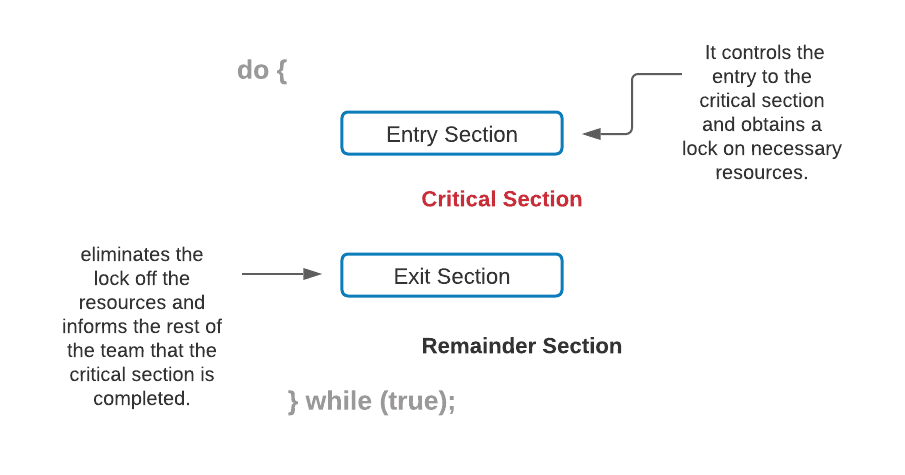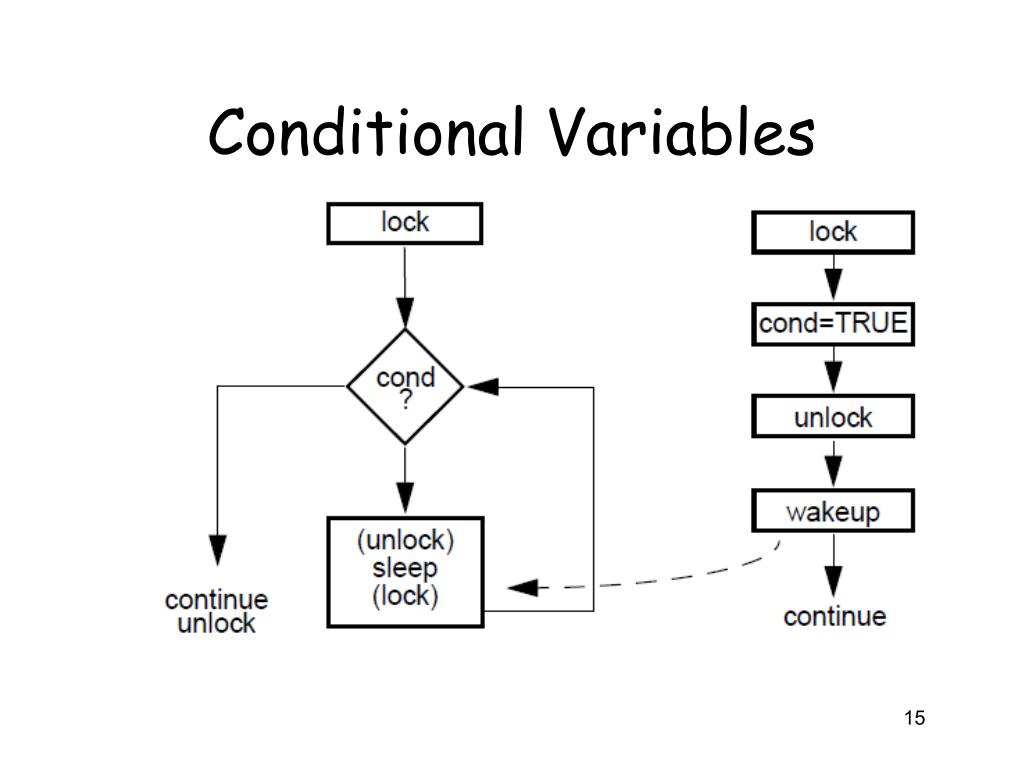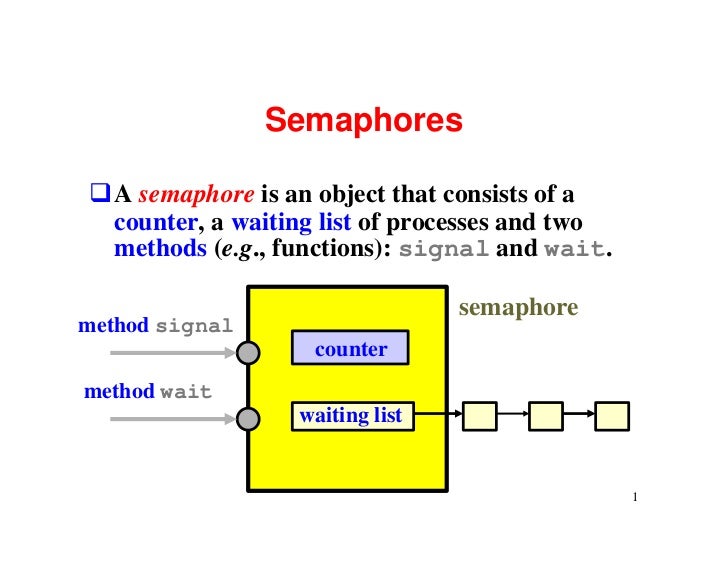🔄 Process Synchronization
Complete Interview Guide with Visual Examples
1. Critical Section Problem
🎯 Interview Key Point: Critical Section is a code segment where processes access shared resources. Only ONE process should execute in critical section at a time.
Critical Section Visualization

Real Example: Bank ATM withdrawal - Only one person can access account balance at a time to prevent incorrect deductions.
Requirements for Critical Section Solution:
- Mutual Exclusion: Only one process in CS at a time
- Progress: If no process in CS, selection cannot be postponed
- Bounded Waiting: Limit on waiting time
2. Race Condition
⚠️ Problem: When multiple processes access shared data simultaneously, final result depends on execution order.
🎯 Interview Tip: Always explain race condition with bank account example - two people withdrawing money simultaneously.
3. Solutions to Race Condition
| Solution | Description | Pros | Cons |
|---|---|---|---|
| Atomic Operations | Execute in single CPU cycle | Fast, No waiting | Limited operations |
| Mutex/Locks | Binary lock mechanism | Simple to implement | Deadlock possible |
| Semaphores | Counter-based synchronization | Multiple resources | Complex implementation |
4. Mutex/Locks
Mutex Working

Mutex Pseudocode:
acquire(lock)
while (lock == 1)
wait; // Busy waiting
lock = 1;
release(lock)
lock = 0;
// Usage
acquire(lock);
// Critical Section
release(lock);
Mutex Problems:
- Busy Waiting: A process continuously checks for a condition in a loop without releasing the CPU, wasting CPU cycles instead of performing useful work.
- Deadlock: Processes wait for each other
- Starvation: High priority threads blocked
5. Conditional Variables

🎯 Key Concept: Condition variables solve busy waiting problem. Thread sleeps until condition is met.
Condition Variable Operations:
wait(condition, lock)
// Release lock and sleep
// Wake up when signaled
// Reacquire lock
signal(condition)
// Wake up one waiting thread
broadcast(condition)
// Wake up all waiting threads
Producer-Consumer Example:
Producer waits if buffer full
Consumer waits if buffer empty
No busy waiting - threads sleep when condition not met
Producer waits if buffer full
Consumer waits if buffer empty
No busy waiting - threads sleep when condition not met
6. Semaphores
Semaphore Concept

Semaphore Operations:
wait(S) / P(S) / down(S)
while (S <= 0)
wait; // Block process
S--;
signal(S) / V(S) / up(S)
S++;
wakeup(blocked_process);
| Type | Range | Use Case |
|---|---|---|
| Binary Semaphore | 0 or 1 | Mutex (single resource) |
| Counting Semaphore | 0 to N | Multiple identical resources |
Example: Parking lot with 10 spaces
Semaphore S = 10
Car enters: wait(S) → S = 9
Car exits: signal(S) → S = 10
Semaphore S = 10
Car enters: wait(S) → S = 9
Car exits: signal(S) → S = 10
